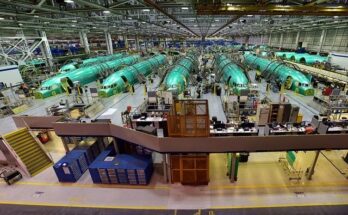by Richard Pettibone, Aerospace & Defense Companies Analyst, Forecast International.
As part of a broad strategy to streamline its operations, Bombardier announced that it would sell off a number of non-core assets valued at $900 million and cut employment by 5,000. These moves are aimed at focusing the company on in its Transportation, Business Aircraft and Aerostructures segments.
As part of the strategy, the company entered into definitive agreements for the sale of the Q Series turboprop aircraft program and de Havilland trademark to a wholly owned subsidiary of Longview Aviation Capital for approximately $300 million; and the sale of Business Aircraft’s flight and technical training activities to CAE and the monetization of royalties for approximately $800 million.
These efforts follow the sale of the CSeries program to a partnership controlled by Airbus. This effort, begun in late 2017, became official in July 2018 when Airbus assumed a 50.01 percent controlling stake in the program. The CSeries was quickly rebranded as the Airbus A220 after taking control of the program. The two new models in Airbus’ lineup, the A220-100 and A220-300, were formerly known as the CS100 and CS300, respectively.
With its CSeries now in stable hands, Bombardier has turned its attention toward its regional aircraft offerings. Here the company offers the Q400 turboprop and CRJ and Global series of regional jets. The market here has been a difficult one in recent years. The operating environment for regional carriers has become increasingly difficult, as industry consolidation has shrunk the number of major legacy airlines in U.S., the largest geographic market for regional aircraft, from six to three. This situation is echoed in Europe, which also faces a stricter regulatory environment and increase competition from low fare-carriers.
As such the company has opted to divest its program in the turboprop market and solely concentrate on regional jets with its CRJ and Global programs.
The company’s decision to sell the Q400 program leaves it with just one regional airliner in its portfolio, the slow-selling CRJ regional jet. The CRJ is facing serious competition from Embraer’s family of regional jets, which is likely to get stronger if Boeing takes control of its commercial jet line, and from Mitsubishi’s all new regional jet. While the CRJ family will continue in production for the time being, the program is in serious danger of cancellation. The company said it will “explore strategic options” for the CRJ, which may be a market warning that the program could go sooner than forecast.
Production of the company’s Challenger and Global business jet line, which continues to sell well, will become the centerpiece of Bombardier’s aircraft business. In this market, the company recently introduced several new variants such as the Global 5500 and 6500 with more powerful and fuel-efficient engines as well as other improvements. These models are aimed at standing out in the hypercompetitive regional jet market as new models from competitors, such as the Dassault Falcon 7X and the Gulfstream G600, compete for sales.
Restructuring Broadens
Bombardier also launched a new enterprise-wide productivity program to further streamline, lean out and simplify the company, which will result in cuts of about 5,000 positions. Here the restructuring initiative is focus on optimizing production and management processes, flattening management structures and further reducing indirect costs. Key engineering team members will be redeployed to the business segments, with the largest group moving to Business Aircraft, to ensure they have all the necessary capabilities for future business jet development programs, the company said.
Bombardier will also establish a new Advanced Technologies Office (ATO), which will be led by François Caza, who has been appointed Bombardier’s Chief Technology Officer. The ATO will focus on systems design and engineering, including applying experience from Bombardier’s aerospace programs to its rail transportation business.
These moves will occur over the next 12 to 18 months, leading to annualized savings of approximately $250 million at full run rate by 2021.
These latest moves will see a dramatically different Bombardier emerging in 2019. Bombardier’s new management team has moved aggressively to the company to current market challenges. As a result, Bombardier Aerospace will emerge as an entity solely focused on aerostructures and business jets.
For over 15 years, Richard has authored Forecast International’s Defense & Aerospace Companies series, Volume I (North America) and Volume II (International) services. The two books provide detailed outlines and analyses of major aerospace and defense contractors.
A military history enthusiast, Richard began at Forecast International as editor of the World Weapons Weekly newsletter. As the Internet grew in importance as a research tool, he helped design the company's Forecast Intelligence Center and currently coordinates the EMarket Alert newsletters for clients. Richard also manages social media efforts, including two new blogs: Defense & Security Monitor, covering defense systems and international issues, and Flight Plan, which focuses on commercial aviation and space systems. For over 30 years, Richard has authored the Defense & Aerospace Companies, Volume I (North America) and Volume II (International) services. The two books provide detailed data on major aerospace and defense contractors. He also edits the International Contractors service, a database that tracks all the contractors involved in the programs covered in the FI library. More recently he was appointed Manager, Information Services Group (ISG), a new unit that encompasses developing outbound content for both Forecast International and Military Periscope.




